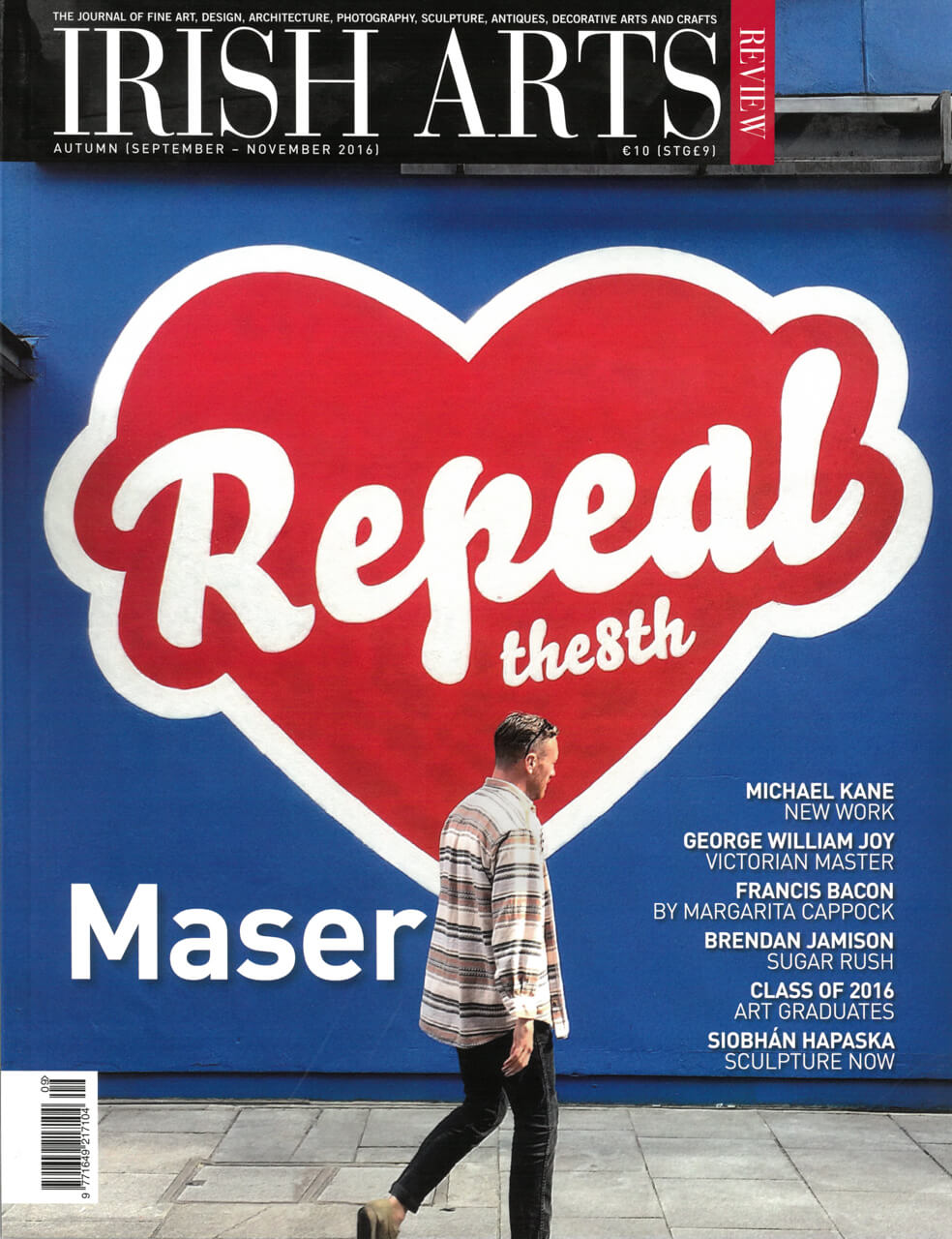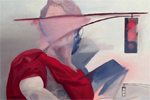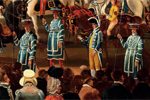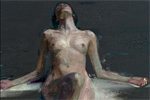
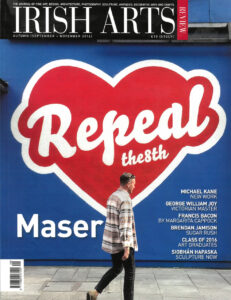
Brian McAvera sees Colin Davidson wrestle with sexual politics in his new series of Nudes on view this autumn at Oliver Sears Gallery, Dublin.
Irish art, historically speaking, is not noted for its depiction of sexuality. The genre of The Nude, one of the mainstays of the classical European tradition, is rarely practised. As a genre, the nude nowadays is problematical. When Kenneth Clark, in 1956, made his distinction between the naked (no clothes on) and the nude (an art form, a way of seeing) he was of the opinion that the word ‘nude’ carried no negative connotations. Presumably he hadn’t heard of the Whitehall ‘nudie’ shows. Nowadays the word, in a world incorporating Page Three nudes and internet porn, carries distinctly negative overtones. Perhaps John Berger was rather more precise when, in 1972, he remarked that to be naked is to be oneself whereas to be nude is to be seen naked by others and yet not recognized as oneself. One is a voyeur, and the woman, or man, has become an object. Once upon a time The Nude was both an academic exercise as well as being a demonstration of one’s mastery of varying techniques. The question now, I suppose, in this highly sexualized world that we live in, is: of what relevance is The Nude today?
Colin Davidson’s latest exhibition presents us with ten paintings of nudes, three of them small studies, the rest large-scale works. Although in his early career he had previously painted nudes, the work for which he became well-known – the reflections-in-windows series; and the various series of large-scale portraits – depicted a very different sensibility. These current paintings seem to reveal a quarrel, or rather a series of quarrels, within the artist himself: sensuality versus objectivity; eroticism versus Calvinism; Woman-as-Object versus Woman-as-Human-Being; the structural versus the improvised and the accidental; and what one might call closed poses versus open ones.
All ten nudes are supine. In five of them the model is depersonalized as one cannot see her face as it is either turned away, or covered by an arm or hair. In seven of them the genital area is masked. At first glance one might think of Degas is terms of some of the poses (a seated nude bending over with hair cascading down over her face, for example) but with Degas there is nearly always a dispassionate cool objectivity which is almost matter-of-fact, as if saying ‘This woman just happens to be in my studio, washing herself’. But with these nudes, all kinds of tensions manifest themselves. In one of them – they are all untitled – a young model is sitting on the floor, body scrunched up and observed sideways, eyes and mouth closed. It’s the only painting of the ten in which we have a reasonably clear close-up of a face. But it is very definitely the body seen as object.
Seen from a distance the paint is sensuously applied: thick, creamy pink and white brushstrokes depicting the light bathing her shoulders and upper back, and likewise, the passage from lower back to upper calf. This is not a model who will look out at us and assert herself as an equal or as an independent being; or perhaps one should say, this is not an artist who will pose his model in that manner. The crouched position, closed eyes, and downward viewpoint encourage the viewer to be a voyeur, transgressing a natural modesty. Interestingly, up close, the paint application is in tension with the image: the formal architecture of blocks of paint, of light and shade, is overt but counterpointed by drips and flecks of paint.
There is a very marked contrast between the seven nudes in closed poses, and the three with more obviously open ones. These latter emphasize the sensuality, and the passivity, of the model, whether sitting on a step, legs seemingly dangling in a pool, and leaning backwards, head tilted backwards also, to give prominence to the breasts; or splayed on her back as if in a small pool, legs and head in contraposto. By comparison, two of the closed poses downplay the sensuality – indeed remove it entirely. In one of them the model sits sideways, as if on a wooden packing case, her hands folded over her knees. Here the eroticism of the demure ‘chaste’ figure, or the sensuality of the splayed-out figure, has given way to a cooler, almost acerbic appraisal. The expression on the model’s face suggests patience, perhaps resignation, at the chores of the modelling day; and the almost coy pose is undercut by a paint application that points up the sculptural, and is the opposite of sensual. Shadows, like a huge spreading birthmark, stain the whole of the back that we can see; a palette knife has slashed through an inch or so of flesh, as if flaying it; and the body itself seems to be being revealed in varying states of translucency. This is the body as a site for painterly intervention.
If we observe the painting of the model lying on the floor, legs partially pulled up to emphasise the bottom we have a brutal conflation of a pose which invites sex, with a paint application which stringently denies the pleasures of the body. In all of these works the backgrounds are highly abstracted but agitated: big broad, directional swathes of brushstroke with, here and there, a zip of colour and, frequently, an aura of colour as if an emanation created behind the model’s body. Taken as a whole, this exhibition seems all too classically Irish. A literary parallel would be the early novels of John McGahern: repression and constriction, expression and guilt – a flagellating of the flesh in expiation. These are interesting works and, in many ways, daring, especially for a Northern Irish artist. The obvious question though is: where to next? And can he, as with almost all of Pre-Columbian, Indian, African and Persian art, create female nudes who are enactive, not passive?
All images © The Artist.
Brian McAvera is an art critic.
